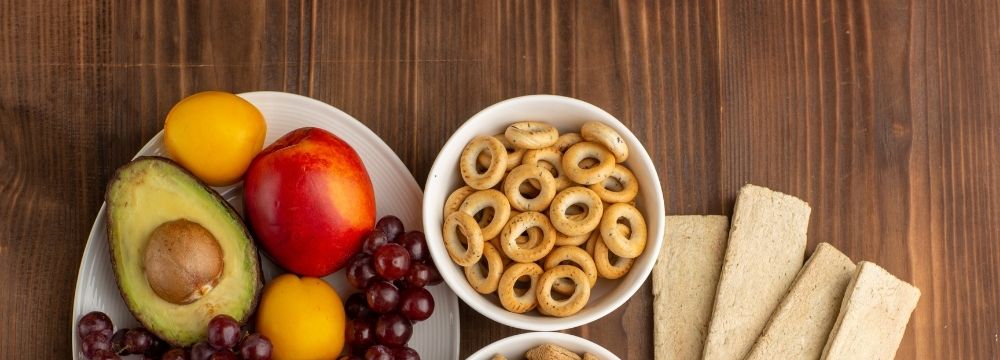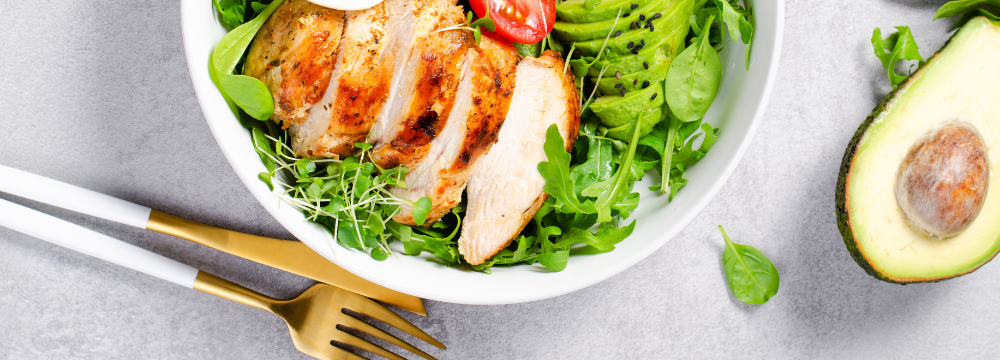
With so much confusion swirling around how we eat and proper “diet,” it can all get very frustrating. How many diet books, blogs, and influencers are out there in the ether? Probably more than we can even imagine. While there are plenty of new dietary concepts, there’s one that’s not new, but it may require a mindset shift for some bariatric patients:
Keep it simple.
Eat for Nutrition, Not Pleasure
Think of eating only in the context of meeting a nutritional goal every 3-4 hours. Consider nutrition as the doses of materials your body needs to feel well and function. These are either energy or construction resources – not meals or snacks. Doses of protein, vitamins, and fiber-rich vegetables will do your body well. Don’t ‘overdose’ on simple carbs like sugars and white grains or energy sources such as fats, but instead try to limit eating for pleasure to select occasions – and plan well for them.
In very general terms, eat more construction food (protein, veggies, fruit, fiber) than energy material.
Take Your Time
Relying on softer foods (like egg whites or cottage cheese) or liquids like protein shakes does well to accomplish nutrition goals quickly. This is just fine when you are busy. But as is often said, “Time on one’s hands means food in one’s mouth.” Chewing solid food protein and vegetable sources is ideal when we have some time to eat such as evenings after work. Remember, you shouldn’t skip breakfast or between-meal ‘doses’ of protein. Try not to miss a ‘dose’ of nutrition – think of it just like medication. This is simple, though not always easy.
Do Not Stay Hungry
If your goal is to reduce body fat, avoid the “Seven Deadly Sins” of energy foods. Avoid bread, potatoes, pasta, rice, corn, added sugar, and flour. When it comes to “energy foods,” reduce animal fats as much as possible to control your caloric intake. Generally, it takes energy to digest and process fats and almost no energy to process simple carbs. That’s how and why the Atkins, grapefruit, and Keto diets work, even with bacon, for example, as a feature.
You’ll Skip What You Don’t Miss
If you manage to avoid simple carbs for just a few weeks, you will stop missing them. Carbs affect you negatively in two ways. Not only are they easy and habit-forming due to their taste, but they also make you crave more by forcing an ‘insulin dump’ by your pancreas to drive sugar energy into cells that need it. The rest is processed by your liver into fat. Made worse by insulin resistance (such as in type-2 diabetes), excess insulin circulates and hormonally increases hunger. It is a hunger primarily for more sweets, so this insulin will have something on which to act. Even if you can be disciplined enough to eat protein during those post-sugar crashes, the insulin continues to circulate, and hunger persists even when you might otherwise be satisfied. This explains why you may be more ravenous after eating a typical sugary cereal for breakfast as opposed to days when you skip breakfast altogether. That’s “insulin hunger” driving you to the candy.
Enjoying Food
For many of us, eating only to exist is not exciting. We want to enjoy what we eat. Unfortunately, when eating highly processed, sugary, and fast foods, we abuse our taste buds to the point where they simply do not respond to fresh and delicious fruits, vegetables, and lean protein. However, as you follow your new, simple diet, these wholesome and fresh foods will become more enjoyable, and you won’t miss the less healthy options.
The Exercise Game Doesn’t Change
Move more, eat less. Set a goal to exercise more today than yesterday and this week than last. The goal remains the same whether you succeed or fail at nutrition or exercise regimens. Keep trying, and don’t get discouraged.
Work or “usual” activities are your body’s baseline, and it will not be compelled to dip into your energy stores (excess fat) until you demand more. Exercise generally includes dedicated activity that keeps your heart rate over 100 for at least 20 minutes. Walking briskly for even just 20 minutes counts, but always plan to do more tomorrow if you can, regardless of what is accomplished today…until a habit is in place.
Swimming continuously for 20 minutes or more is arguably the best exercise possible because of the no/low weight impact on joints and related structures. All the while, you are engaging nearly every muscle group and extremity. Swimming for exercise is a rare habit for most. So, start with a single lap or even part of one. Then try for more the next time. Keep repeating until you reach your goals or Olympic gold, whichever comes first.
Everything you want is on the other side of hard ~Monty Williams, Phoenix Suns Head Coach.










